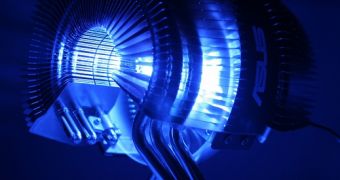It is well known that electronic devices work better when subjected to low temperatures. The reason is very simple. The electrical resistance of materials is in direct relation with temperature. Higher temperature means higher electrical resistance and ultimately higher power loss. With enhanced temperature, thermal noise is also increased, not to mention lower speed and reliability. Long story short, electronics don't like heat!
Investigating the extreme cooling of electronic components at a chip level, researcher Srinivas Vanapalli argues that by bringing electronics at temperatures as low as -150 degrees Celsius, electronic detectors can be made more sensitive and low-noise amplifiers could reduce their noise even further. Vanapalli showed with his proof-of-concept that small dimension coolers can be more efficient than any of the conventional ones currently available on the market, thus raising interest amongst commercial companies.
The research carried out by Vanapalli was mostly focused on miniaturizing regenerative coolers. With the help of colleagues from the University of Twente and in collaboration with the National Institute of Standards and Technology, Vanapalli was able to create coolers working on Stirling cycles, which function by compressing and expanding a working gas.
Two problems had to be solved first, however. One was the pressure of the gas inside the system needed to be increased, thus the frequency of the cycle along with it. By doing so, miniaturization and cooling capacity of the cooler are ensured.
Unlike typical coolers which work at frequencies of 50 Hz, the cooler constructed by Vanapalli works at a frequency of 120 Hz and it is three times smaller than the conventional one, but still able to provide the required cooling output. Most of the research was conducted on even smaller and higher frequency coolers, however a good balance between heat exchange and pressure loss inside the micro-channels could not be reached.
In order to obtain an acceptable heat exchange, multiple small gas channels must be created but the pressure loss would be too great this way. Upon further analyzing the model of the structure created on silicon chips 20 micrometers in width and 200 micrometers high, Vanapalli found what caused the pressure drops inside such structures. Vanapalli says that the next step of the research will involve creating a cooler operating at a frequency of 1 kHz and powered by a metallic membrane put in motion through a piezoelectric element.

 14 DAY TRIAL //
14 DAY TRIAL //